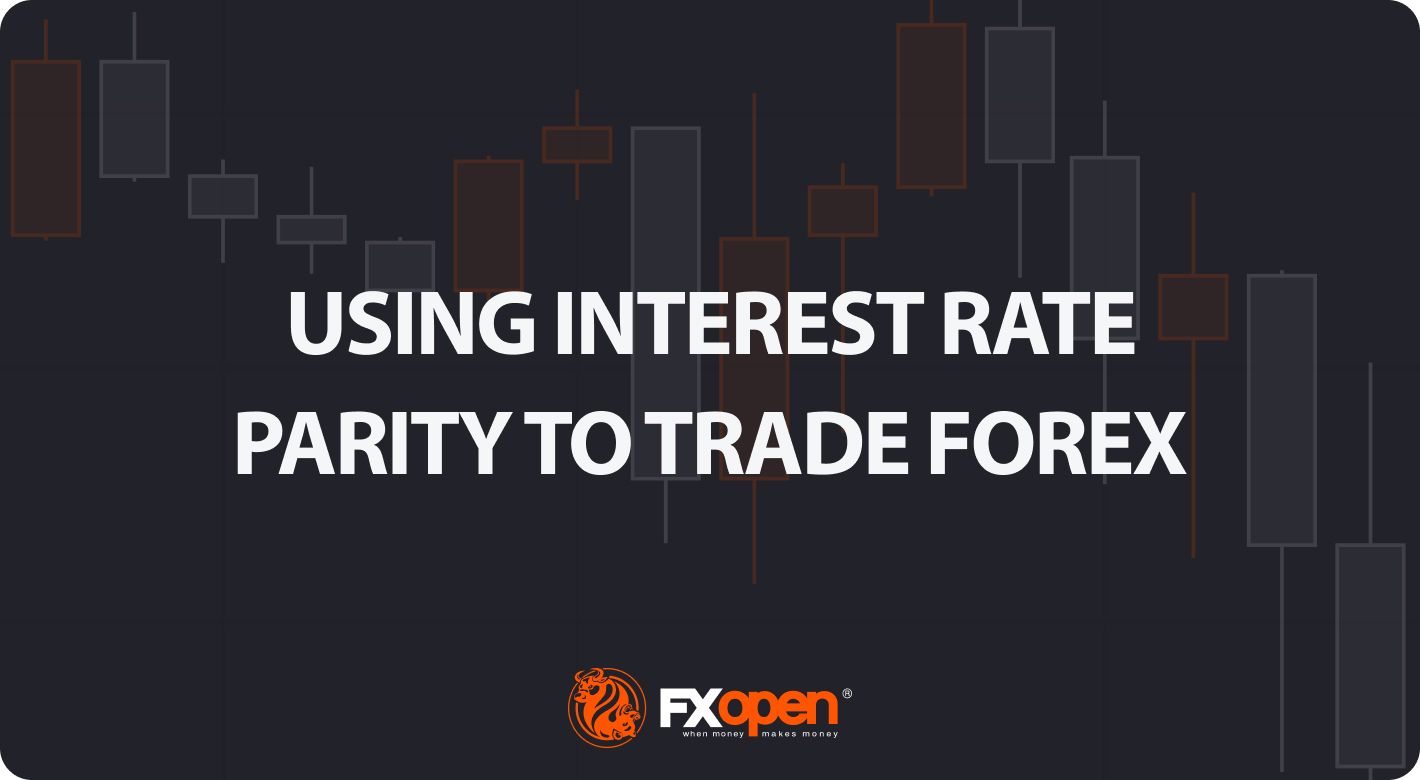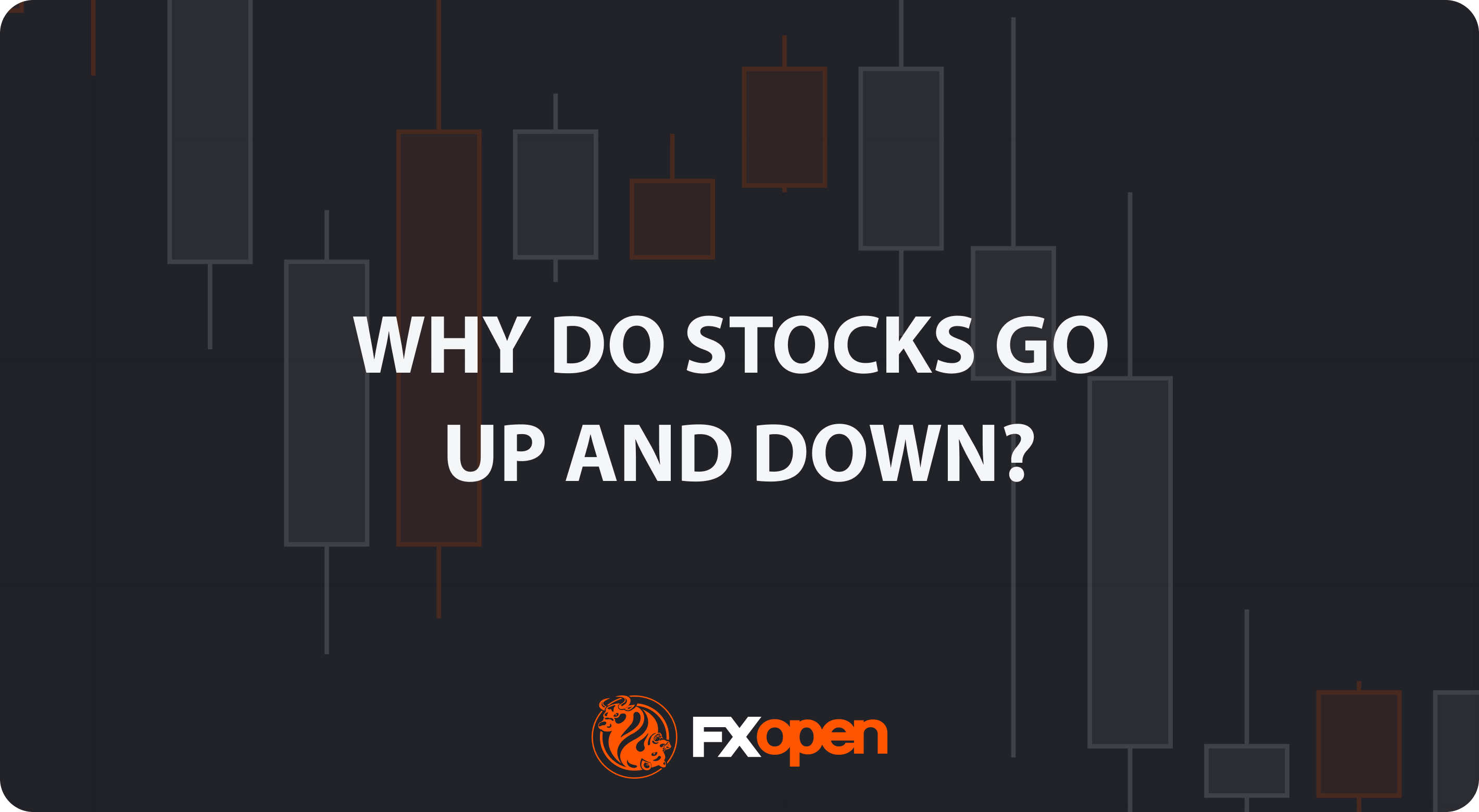FXOpen

Interest rate parity stands as a cornerstone concept in forex trading, offering a lens to assess currency value shifts based on interest differentials. This article explains how traders can leverage this principle to make strategic decisions, delving into its mechanics, implications, and practical applications in the forex market.
Understanding Interest Rate Parity
Interest rate parity (IRP) is a foundational theory in foreign exchange markets that provides a link between exchange rate parity and the cost of borrowing. At its core, IRP posits that the difference in interest rates between two countries is equal to the differential between the forward and spot exchange rates when adjusted across compounding periods.
To understand IRP, one must first grasp the concepts of spot and forward rates. The spot rate is the current price at which one currency can be exchanged for another. For instance, if the EUR/USD spot price is 1.10, one euro can buy 1.10 US dollars today.
Conversely, a forward rate is agreed upon today but represents the price at which one currency will be exchanged for another at a future date. Forward values are based on the spot rate but adjusted by the interest differential between the two currencies. If the US borrowing cost is higher than that in the Eurozone, the forward price for EUR/USD will typically be higher than the spot price.
Exchange rate parity refers to a situation where the value of two currencies is at an equilibrium, such that there are no arbitrage opportunities from interest differentials. IRP theorises that the forex is efficient and self-correcting in the long run, with interest and exchange rates moving in tandem to eliminate arbitrage opportunities.
The Mechanics of IRP
The interest rate parity formula is instrumental in determining the fair value of a forward price. The formula is based on the premise that the difference in borrowing costs between two countries is an anchor of market movements over time. In essence, it equates the return on a domestic deposit to the return on a foreign deposit, factoring in price movements.
To calculate this, one would use an interest rate parity calculator, which requires inputs such as the domestic and foreign interest rates, the spot price, and the duration of the contract. The formula is expressed as:
F = S * (1 + id) / (1 + if) ^ t
Where:
F is the forward exchange rate,
S is the spot exchange rate,
id is the domestic interest rate,
if is the foreign interest rate,
t is the time duration of the contract (in years).
The forward rate (F) tells traders what the forex quote should be in the future to prevent arbitrage due to the interest differentials. For instance, if the domestic country A offers a lower lending rate compared to the foreign country B, it is expected that the domestic currency will depreciate in value relative to the foreign currency over time. The expected depreciation is reflected in a forward value that is lower than the spot value.
Understanding the IRP calculation can help traders analyse where currencies are headed, providing the foundation of strategies such as hedging or speculative trades based on anticipated lending rate movements. While these calculations provide theoretical values, actual market prices may diverge due to market sentiment, liquidity conditions, and unforeseen economic events.
Interest Rate Parity Example
Assume an investor is choosing between depositing $100,000 in the United States at an annual interest of 2% (id = 0.02) or in the United Kingdom at an annual interest of 5% (if = 0.05). The current spot price (S) is 1.3000 USD/GBP.
The future value of the US investment after one year would be:
100,000 * (1 + 0.02) = 102,000 USD
To calculate the equivalent investment in the UK, convert the dollars to pounds at the spot value and apply the UK lending rate:
(100,000 / 1.3000) * (1 + 0.05) ≈ 80,769.23 GBP
Now, to avoid arbitrage, the forward rate (F) should equate the future value of the UK investment when converted back to USD to the future value of the US investment. The formula to find the forward rate is:
F = S * (1 + id) / (1 + if)
Plug the values into the formula:
F = 1.3000 * (1 + 0.02) / (1 + 0.05)
Simplify the equation:
F = 1.3000 * 1.02 / 1.05
F ≈ 1.2714 USD/GBP
This means the forward price should be approximately 1.2714, indicating that in one year, one British pound is expected to be exchanged for 1.2714 US dollars, based on the interest differential.
Using IRP to Trade Forex
Using IRP in forex trading involves analysing currency parity to determine future prices. Traders can gauge the potential movement of forex pairs by examining the interest differentials between two economies.
If a country's borrowing costs rise relative to another's, its currency is often expected to strengthen due to the appeal of higher returns on investment. This relationship is a key consideration in strategies such as the carry trade, where traders borrow in a currency with a low borrowing cost and invest in one with a higher yield, taking advantage of the differential. Using platforms like FXOpen's TickTrader may enhance the process, providing over 1,200 trading tools to help demystify the markets.
Factors Influencing IRP
IRP is significantly influenced by central bank policies, as these institutions set the base interest rates in their respective currencies. Decisions to change these rates often reflect economic conditions like inflation, employment levels, and economic growth.
Additionally, geopolitical events, market sentiment, and financial stability contribute to borrowing cost fluctuations. While central bank announcements can cause immediate market reactions, long-term trends in IRP are shaped by the underlying economic health of nations. Traders monitor these indicators to analyse shifts in currency parity and adjust their strategies accordingly.
The Bottom Line
In exploring the intricacies of IRP, traders gain valuable insights into the dynamics of forex trading. It's a crucial part of a strategic toolkit, helping to anticipate and react to market movements. For those ready to apply this knowledge, opening an FXOpen account offers a gateway to harnessing the power of interest differentials in the dynamic forex market.
This article represents the opinion of the Companies operating under the FXOpen brand only. It is not to be construed as an offer, solicitation, or recommendation with respect to products and services provided by the Companies operating under the FXOpen brand, nor is it to be considered financial advice.
Stay ahead of the market!
Subscribe now to our mailing list and receive the latest market news and insights delivered directly to your inbox.








